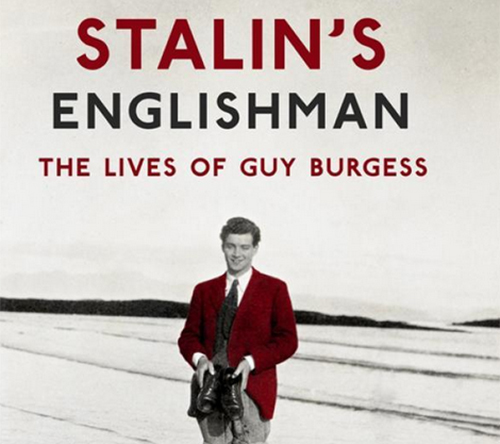Stalin’s Englishman: the Lives of Guy Burgess
Book Review

Stalin’s Englishman: the Lives of Guy Burgess by Andrew Lownie - Hodder and Stoughton, 2015. 432 pp, £9-99. ISBN 978-1-473-62738-3
Andrew Lownie has given us the first proper biography of Guy Burgess, the fruit of twenty years of meticulous research including over 100 interviews. He has followed the traditional approach, taking us first through his father’s early death and his education at preparatory school, Dartmouth and Eton.
There is much on the Cambridge years: his membership of the Apostles (neatly described as “one of the best known secret societies in the world”) and of the Communist Party, against the background of the Depression and continental fascism, and his burgeoning homosexuality. Here he became a Soviet agent, active in recruiting his fellow spies: MacLean, Philby, Blunt and Cairncross. Burgess’s commitment to communism was reinforced by a trip to Russia in 1934, when he was impressed by Soviet treatment of minorities.
After Cambridge, Burgess flitted from one Establishment institution to another: the BBC where he arranged talks by the likes of Anthony Blunt and Christopher Isherwood, the Intelligence Service, where he was the first of the Cambridge spies to infiltrate, and, finally, the Foreign Office, in whose service he spent the years 1950-1 in Britain’s Washington Embassy. Everywhere his behaviour was appalling: sexual promiscuity, extreme drunkenness and total indiscretion. Thus he aroused the suspicions of the US intelligence community, both for his louche lifestyle and his strident assertions against US foreign policy. Meanwhile he sent to his Russian controllers no fewer than 4,604 documents in the years 1941-5 alone – overwhelming them and leading to suspicions that he was a double agent. Blunt submitted fewer than half this number in the same period, but Lownie shows that Burgess’s were dynamite: they included later secret material on the planned US/UN attack to the Yalu River in Korea, an act which may well have cost the lives of US troops. Moreover he helped to foster a mood of distrust that persisted in the security services long after his defection.
US security was dismayed when he and MacLean defected in 1951, surfacing in Moscow only in 1956. Atomic energy intelligence liaison was broken off, and it took years for the two allies’ secret services to trust each other again, but Lownie is cautious in trying to assess the damage caused by Burgess to western interests. Yet he gives fascinating detail on Burgess’s ambivalence towards Britain: an early obsession with London clubs (“some of which he even belonged to” asserts Lownie), the Fortnum hampers from mother, the collection of Old Etonian ties and a cricket match in 1962.
In conclusion Lownie is clear that Burgess is the real leader of the Cambridge spies, driven by his dysfunctional home background and the sense of being an outsider. Once in the KGB’s embrace Burgess was trapped, but Lownie points out that by no means everyone who shared his upbringing went on to spy. Yet Burgess’s faith didn’t fail, and he remained untroubled by the Nazi-Soviet Pact of 1939 and the Soviet invasion of Hungary in 1956.
This is a fascinating book, enlivened by many new sources and the results of painstaking interviews. However it may not be the end of the story: nineteen boxes of documents about Burgess are still kept secret in the Foreign Office archives among a hoard of one million.

